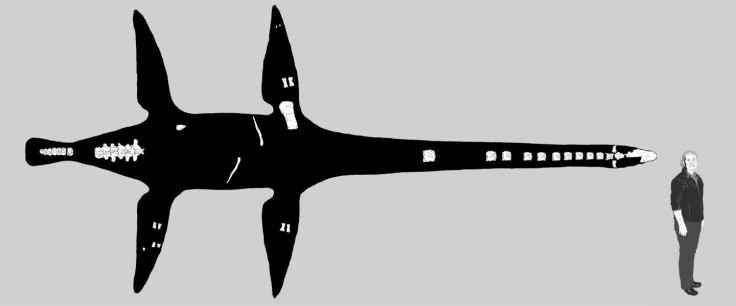A 132 million-year-old sea monster has been identified as a new species
The marine reptile is the earliest of its kind to be discovered.

An eight meter-long, 132-million-year-old sea reptile has been identified by researchers more than half a century after it was first discovered in Germany. The fossilised skeleton is that of a plesiosaur, an extinct marine reptile which roamed the oceans in the time of the dinosaurs.
"The most important aspect of this new plesiosaur is that it is amongst the oldest of its kind", says Dr Benjamin Kear, senior author of the study from the Museum of Evolution at Uppsala University in Sweden. "It is one of the earliest elasmosaurs, an extremely successful group of globally distributed plesiosaurs that seem to have had their evolutionary origins in the seas that once inundated Western Europe".
Private fossil collectors rescued the well-preserved specimen in 1964 after it was unearthed in a clay-pit in Sarstedt near Hannover. However, a team of international scientists was only recently allowed to study the remains of the ancient animal which were being held at the Lower Saxony State Musem.
"It was an honor to be asked to research the mysterious Sarstedt plesiosaur skeleton" says Sven Sachs, lead author of the study published in the Journal of Vertebrate Paleontology. "It has been one of the hidden jewels of the museum, and even more importantly, has turned out to be new to science".
The newly identified plesiosaur has been named Lagenanectes richterae, which translates as 'Lagena Swimmer' after the medieval German name for the Leine River near Sarstedt where it was found. The second part of the name refers to Dr Annette Richter, the Chief Curator of Natural Sciences at the Lower Saxony State Museum, who facilitated the identification of the fossil.
The skeleton includes a skull full to the brim with long fan-like teeth, as well as neck vertebrae, and bones from the limbs which resemble flippers. Lagenanectes would have lived in a shallow sea that once encompassed what is now northern Germany 132 million years ago.
"The jaws had some especially unusual features." says Dr Jahn Hornung a palaeontologist and co-author on the study. "Its broad chin was expanded into a massive jutting crest, and its lower teeth stuck out sideways. These probably served to trap small fish and squid that were then swallowed whole".
The upper jaws display internal channels in the bone which researchers think could have housed a network of nerves linked to receptors on Lagenanectes' snout. These may have been used to locate prey.
Elasmosaurs were among the largest plesiosaurs, sometimes growing up to 15 metres in length, with incredibly long necks, including up to 75 vertebrae. They flourished during the Cretaceous period (145-66 million years ago) but went extinct at the same as the dinosaurs.
© Copyright IBTimes 2024. All rights reserved.





